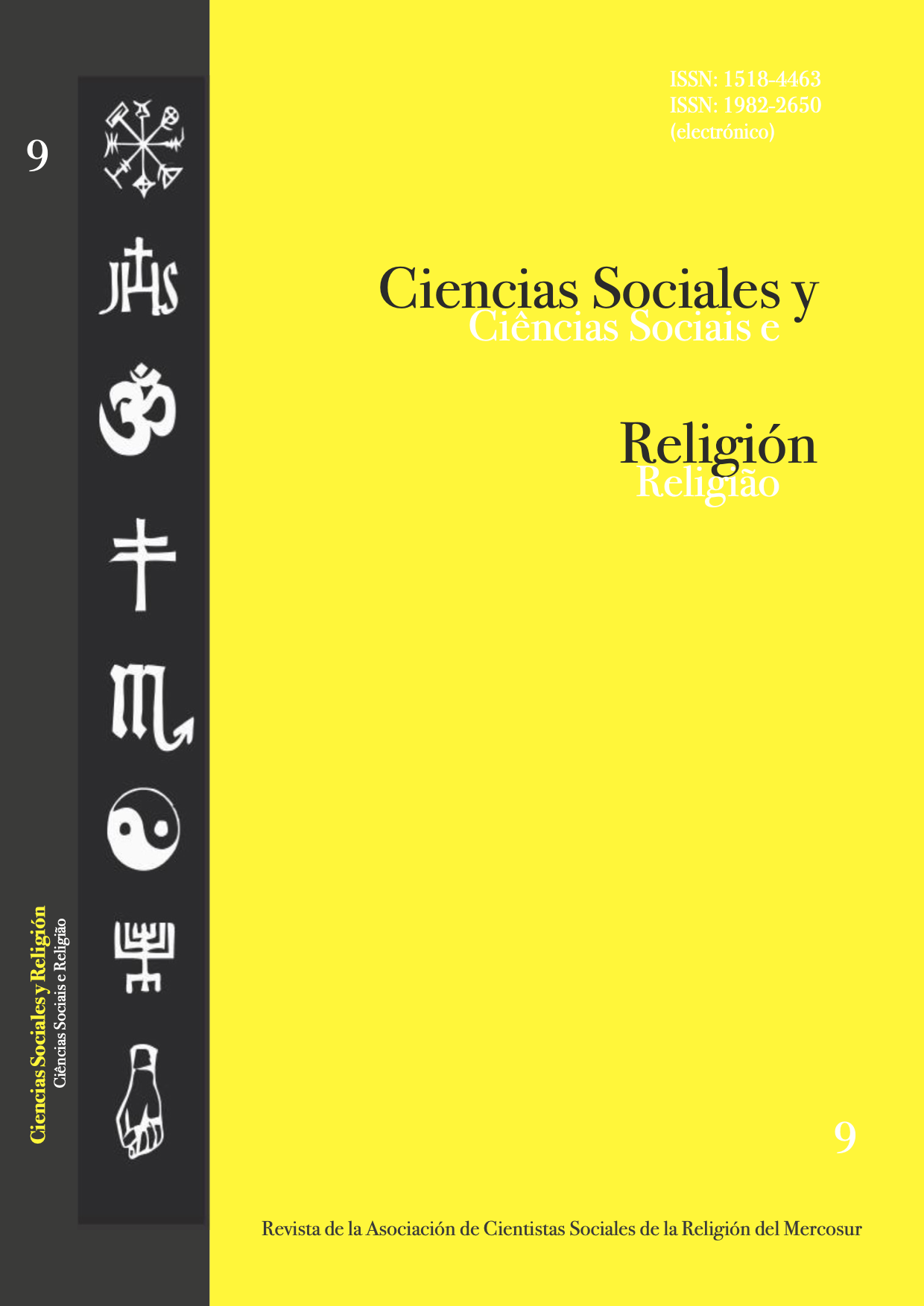Abstract
Based on the theoretical referential of symbolic interaction, we have endeavored to understand the construction and the maintenance of the evangelical religious identity by individuals who are living in a specific social institution: the prison. In order to do this, we have focused the analysis on the practices and the relationships established by these individuals. On the one hand, we have pointed the transformations in terms of the values, the interpersonal loyalty and the behavior of the converted inmates, on the other hand, we have analyzed the relationships between these religious inmates and the general inmate population, and those are branded by tensions and conflicts. From this double approach – the internal relationships of the religious group and the interactions between religious inmates and general inmate population – we have intended to show the precariousness of this religious identity, constructed in an institution ruled by norms and sui generis values, which define the religious practice inside the dynamic of the prison and the ambiguous position the religious groups hold in this singular social system.
References
ADORNO, Sérgio. Socialização na delinqüência: reincidentes penitenciários em São Paulo. Cadernos CERU, série 2, n.3, São Paulo, 1991a, p.113-147.
ADORNO, Sérgio. Sistema penitenciário no Brasil. Revista USP, n. 9-1, 1991b, p. 65-78.
BERGER, Peter. O dossel sagrado: elementos para uma teoria sociológica da religião. São Paulo: Paulus Editora, 1985.
BERGER, P. L. & LUCKMANN, T. A construção social da realidade. Petrópolis: Vozes, 2000.
CASTRO, M. M. P. de. Ciranda do medo – Controle e dominação no cotidiano da prisão. Revista USP, n. 9-1 , 1999, p. 57-64.
GOFFMAN, E. Estigma: Notas sobre a manipulação da identidade deteriorada. Rio de Janeiro, LTC Editora, 4. ed., 1988.
GOFFMAN, E. Manicômios, prisões e conventos. São Paulo: Perspectiva, 2001.
GOFFMAN, E. A representação do eu na vida cotidiana. Petrópolis: Vozes, 2002.
JOCENIR. Diário de um detento: o livro. São Paulo: Labortexto Editorial, 2001.
JOZINO, Josmar. Cobras e Lagartos: a vida íntima e perversa nas prisões brasileiras. Quem manda e quem obedece no partido do crime. Rio de Janeiro: Editora Objetiva, 2005.
MARIANO, R. Neopentecostais: Sociologia do novo pentecostalismo no Brasil. São Paulo: Edições Loyola, 1999.
RAMALHO, J. R. O mundo do crime: a ordem pelo avesso. São Paulo: IBCCRIM, 2002.
SNOW, D. A. & MACHALEK, R. The sociology of conversion. Annual Review of Sociology, n.10. 1984, p. 167-190.
SYKES, Gresham M. The society of captives: a study of a maximum security prison. Princeton, New Jersey: Princeton University Press, 1974.
VARELLA, Dráuzio. Estação Carandiru. São Paulo: Companhia das Letras, 2002.

This work is licensed under a Creative Commons Attribution-NonCommercial-ShareAlike 4.0 International License.
Copyright (c) 2020 Camila Caldeira Nunes Dias
